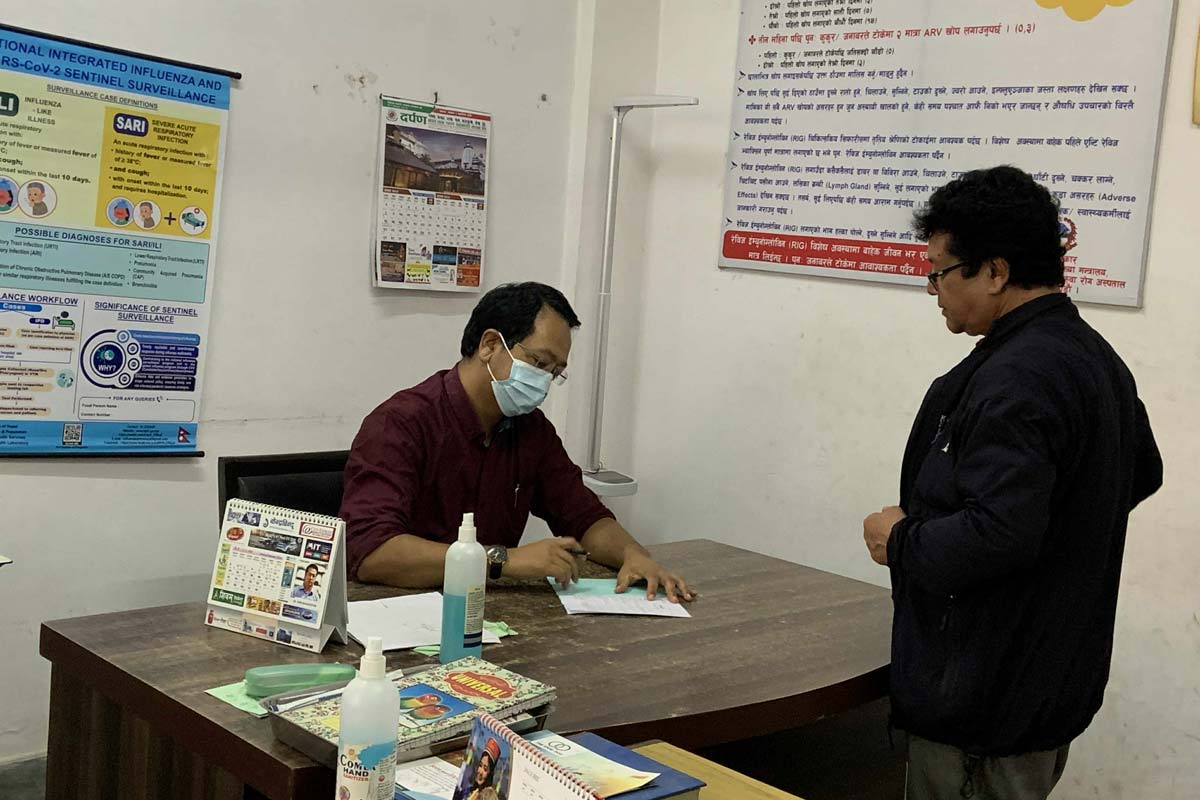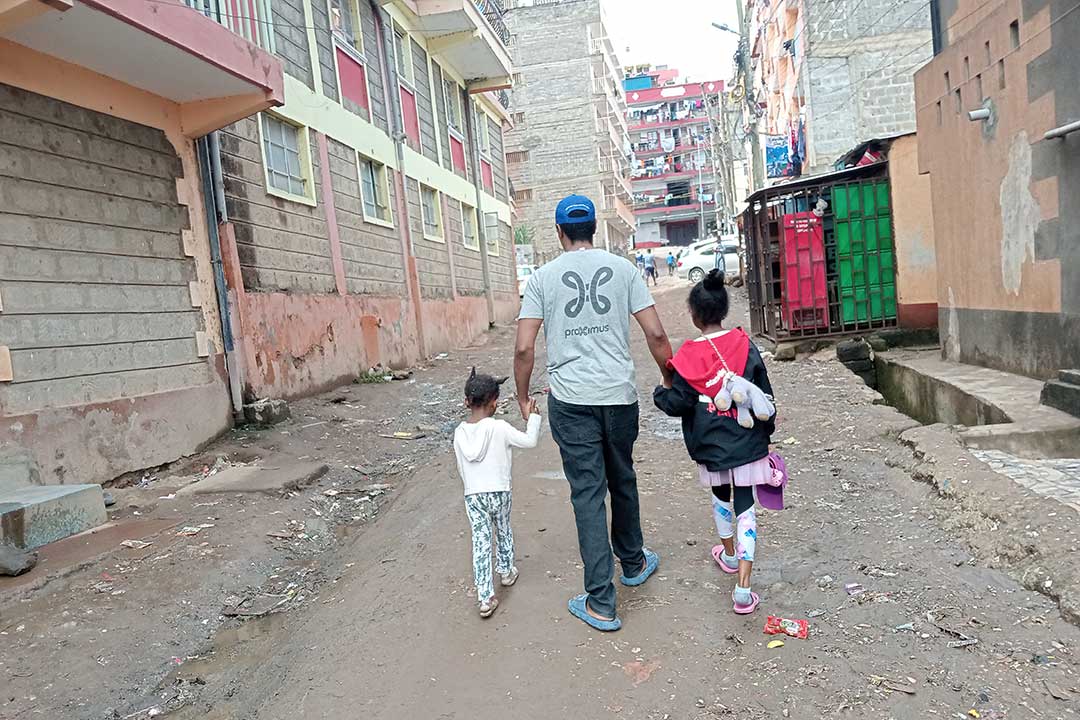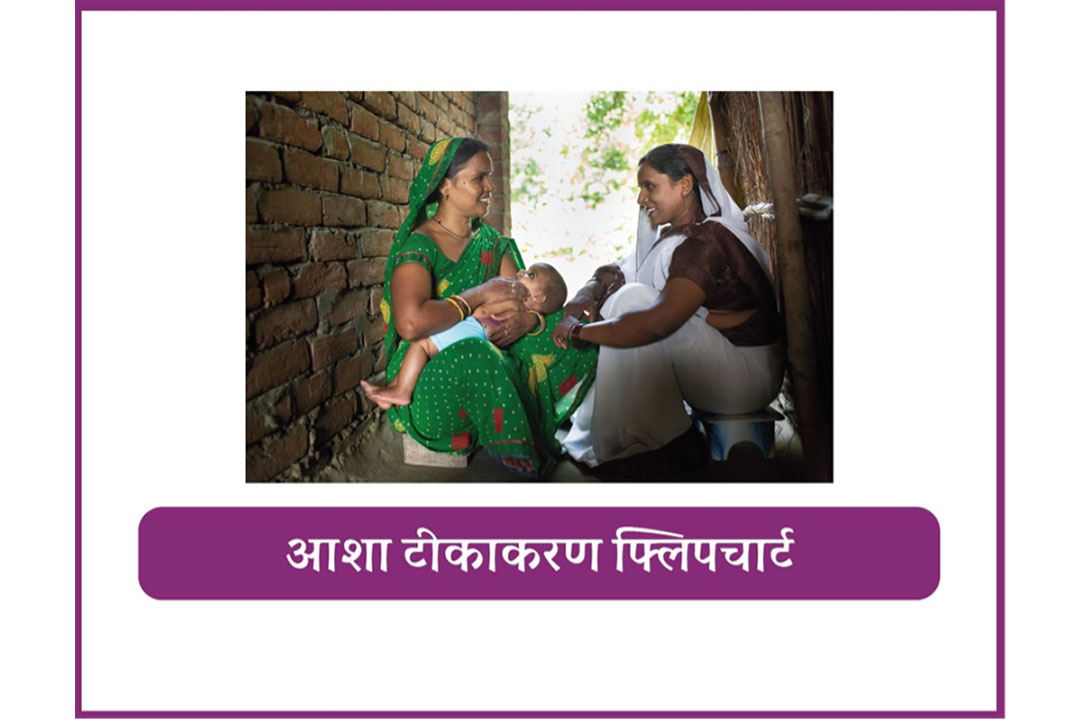Nepal is racing to wipe out rabies by 2030, but leaders say it’s time to up investment in vaccines
Rabies vaccinations are saving lives, but without mass dog immunisation, Nepal may struggle to meet its 2030 goal, experts warn.
- 26 September 2025
- 6 min read
- by Pragya Timsina

In 2017, a five-year-old boy from Kathmandu was out walking with his parents, when he was scratched by a random, roaming dog. Since it was just a minor scratch, his parents thought little of it. But a few weeks later, the boy began behaving strangely.
The first signs of rabies are often not especially alarming: patients typically experience a tingling at the wound site. They may run a fever, and feel nauseous. But even at that early stage, a fatal progression has set in. Once symptoms have appeared, death from rabies is all but certain.
Over the following days, the neurological attack mounted by the virus intensifies. Patients experience symptoms that include drastic behavioural changes, including extreme aggression, loss of muscle control, hydrophobia, salivation – and finally, within usually two weeks – cardiac and respiratory arrest.
His parents took the boy to hospital, but all doctors could do was try to make him comfortable while he slipped away.
The memory still haunts Dr Sher Bahadur Pun, who treated the child. In more than two decades working at the Sukraraj Tropical and Infectious Disease Hospital in Kathmandu, he has seen hundreds of deaths. But this one – in such a cute and loving child – affected him deeply. From that day, Pun committed himself to raising public awareness of rabies, so that other Nepali families might avoid the same tragedy.
A hidden killer
In recent years, rabies has been reported to claim tens of human lives a year in Nepal, with the animal toll numbering in the hundreds. The true burden from the incurable virus is thought to be higher, particularly in rural areas where people rarely seek medical help and access to timely treatment is limited. While many animals, from jackals to bats and tigers can transmit rabies, more than 95% of human rabies cases stem from dog bites.
Yet, these deaths are preventable, with timely access to post-exposure prophylaxis – a life-saving wound-management protocol that includes vaccines given after a potential exposure to rabies virus – and effective mass immunisation of animals to break the transmission cycle.
How to save yourself from death by rabies
If your skin has been broken by an animal, and you’re not 100% sure that that animal is (1) fully vaccinated against rabies or (2) cannot possibly have had exposure to rabies or (3) a species that isn’t susceptible to rabies, it’s a good idea to get going with the post-exposure prophylaxis protocol.
- Step 1: Wash your wound thoroughly with water, soap and disinfectant for at least 15 minutes.
- Step 2: Get to a hospital as soon as possible, and within 72 hours. Depending on your specific case, you may need to be injected with Human Rabies Immunoglobulin (HRIG) into and around your wound.
- Step 3: Get started on your course of post-exposure vaccines. Health workers will inject you with a series of rabies jabs beginning immediately. The World Health Organization recommends a few different vaccination regimens depending on the case – a typical one includes jabs on day 0 (the day of exposure or as soon as possible afterwards), day 3, day 7 and day 14.
It's not much fun, but it’s close to 100% effective at preventing rabies.
And Nepal has committed to eliminating human deaths from dog-mediated rabies by 2030, aligning with WHO Zero by 30 initiative, so the government has been stepping up its efforts to prevent tragic losses. The pillars of the effort include increasing vaccine production (for now, of the animal vaccine), broadening vaccination campaigns and intensifying public education and awareness.

Vaccination is helping
Nepal’s first rabies immunisation programme was launched in 1983, with the goal of vaccinating 22,000 pet dogs in Kathmandu, plus a further 14,000 in other districts. Initially a nerve-tissue-based vaccine was recommended for human post-exposure or pre-exposure prophylaxis. Following updated WHO recommendations, Nepal has stocked a better, safer cell culture-based vaccine since 2006.
Since 2007, the Nepalese government has also provided anti-rabies vaccine free of charge at government hospitals and health centres.
In 2008, 97 human rabies deaths were officially recorded, and human infections have been reducing each year according to data from Department of Health services. More recently, annual human mortality figures have hovered between 6 and 32.
While he acknowledges that the true toll may be higher than reporting reveals, Dr Chandra Bhal Jha head of Nepal’s Epidemiology and Disease Control Division (EDCD) attributes the decline in fatalities to improved access to vaccination.
Last year, the government provided more than 200,000 vaccine doses free-of-cost to the Nepalese people, says Dr Hemanta Raj Ojha, senior medical superintendent at the Department of Health Services, sparing many of the exposed from a brutal certain death.
Staunching an outbreak
One strategy the government has been pursuing is a “search and vaccinate” programme.
In the month of July 2025, three rabies deaths were reported from a Chepang community in Dhading district, to the west of Kathmandu valley. Chepang are indigenous ethnic groups, well known for their deep connection with the forest and hills.
The three deaths in such a short space of time set off alarm bells in the health system. A committee was quickly assembled to visit homes in the community. During these visits, committee members identified a dog acting aggressive and agitated, attacking humans and cattle apparently randomly. Days later the dog dropped dead.
As a result of the observation, all 287 people living in the Chepang community were vaccinated. No further human rabies cases were reported.
Despite such efforts, rabies cases are not declining as quickly as the government would like. Dr Pun, who has been following rabies in Nepal for last 25 years, said: “Until and unless we vaccinate the animals, especially free-ranging stray dogs, it's almost impossible to completely end rabies by 2030.”
Have you read?
Production needs to scale up
Dr Binaya Kumar Karna, head of the Rabies Vaccine Production Laboratory (RVPL) in the Department of Livestock Services said his institution is currently producing about 180,000 doses of the animal vaccine each year.
That number is “very insufficient,” said Dr Karna, if the country intends to inoculate the country’s large population of street dogs and free ranging animals as well as pet animals.
“If we really want to end rabies by 2030, it’s a high time that country invest generously to produce vaccine at very large scale,” Dr Karna said.
The human vaccine is purchased from outside the country, with the government allocating around 13 million rupees to buy doses for post-exposure prophylaxis. Dr Chandra Bhal Jha, director EDCD, concedes that at some point every year, the country faces a shortage of rabies vaccine. Indeed, last year’s stock of 377,770 vials ran short.
And as a leading official in the campaign to end rabies by 2030, Dr Jha is clear that only way to succeed in this programme is by vaccinating the maximum possible number of animals and every exposed human in the country. “If we want to end rabies by 2030, we need to invest more in vaccines,” Dr Jha said.
More from Pragya Timsina
Recommended for you








